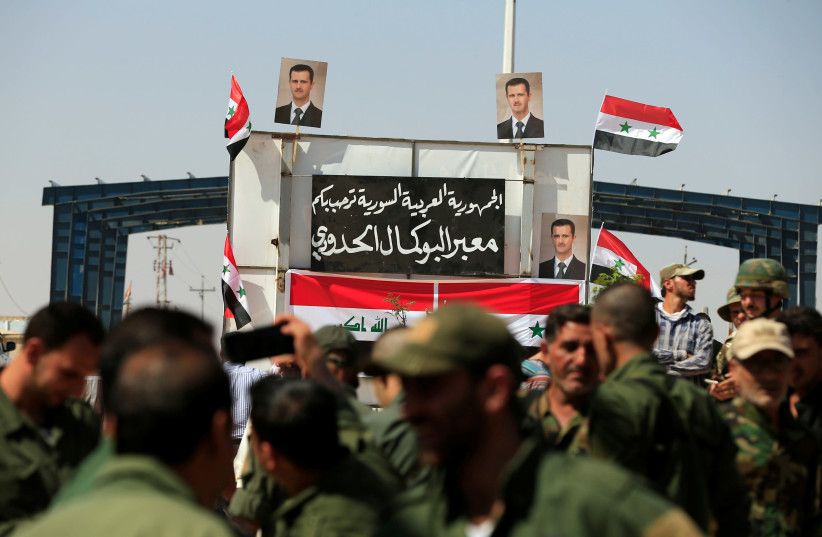According to Syrian reports, alleged Israeli airstrikes targeted sites along the West bank of the Euphrates river valley, from Deir Ezzor to Albukamal on the Iraqi border. This is a sensitive area that Iran has used to move weapons and to develop militia proxies. Iran seeks wider influence here because the Euphrates river valley is a strategic pathway from Syria to Iraq and vice-versa.
Iran wants to dominate this area and in the past it encouraged Kataib Hezbollah, an Iranian proxy in Iraq, to set up a headquarters in Albukamal. Then Iran set up a base called ‘Imam Ali’ near Albukamal to stockpile weapons and control the border with Iraq. Those areas were also targeted in numerous airstrikes from 2017-2019, according to Syrian and foreign media reports.
Iran reportedly pushing Hezbollah to hand over arms to tribes in eastern Syria
The reports of airstrikes on the evening of October 1 come after a report in Kuwait’s Al-Jarida that Iran is prodding Hezbollah to hand over arms to tribal groups in the Euphrates river valley. These groups have been involved in creating instability on the other side of the river, the eastern side. The eastern side is controlled by the Syrian Democratic Forces, which are backed by the US. Over the last two years Iran has encouraged proxies in the area to fire rockets at the SDF and also at areas where US forces are present such as the Omar field and Conoco areas.

Therefore the reports of strikes come at a complex and sensitive time. Iran wants to set eastern Syria aflame with arms provided by Hezbollah to various tribes. The goal of Iran here is not a direct simple plan to attack US forces or the SDF. Rather it wants to create instability and a power vacuum and then fill the vacuum. It also wants the Syrian regime to benefit. When the regime benefits then Russia, which backs the regime, will be pleased. Russia will then look on Iran with a more positive attitude.
Iran already supplies Russia with drones for Russia’s war in Ukraine, but Iran wants more. Iran wants warplanes and other items from Russia. As Iran benefits over the years from the Iran deal and some of the reduction on embargoes on military supplies for Iran, Tehran also wants to increase its defense sales. As such, it prefers that Hezbollah play a larger role in Syria and that Hezbollah-Moscow connections grow.
Iran’s playground of the western side of the Euphrates is a key strategic corridor for Tehran. Reports in Syrian media alleging Israeli airstrikes have not been reported in major Iranian media. Tehran appears to be downplaying the incidents. But this does not mean Iran is not focused on this region. The recent reports at al-Jarida on Monday illustrated that Iran is hoping to create a stratagem in Syria and any interruption of those plans and Iran’s entrenchment upsets Tehran’s plans.
